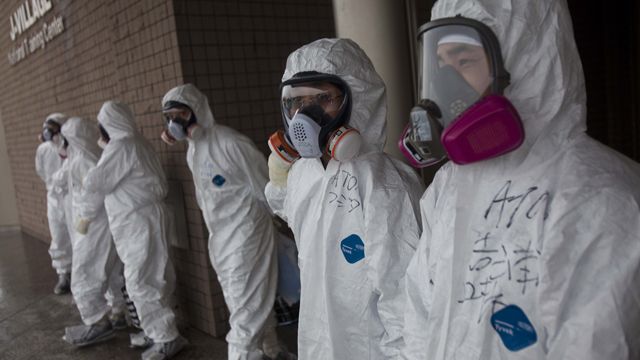This post first appeared in Yes! magazine.

In March 2011, an unknown amount of radiation was released into the atmosphere after a powerful tsunami slammed into the Fukushima Daiichi nuclear reactors on the Pacific coast in Japan. Because people had little access to detailed information about radiation levels, they bought up every Geiger counter they could find in stores and online. Soon the counters were all but sold out worldwide, and in Japan a grey market of shoddy Geiger counters sprouted up, some with faulty or fake parts.
Now, as workers at the plant attempt to move 1,500 highly radioactive spent fuel rods from Unit 4, the most heavily damaged reactor, the risk of radioactive contamination is escalated. The rods, housed in a damaged and leaking concrete pool 100 feet above the plant’s floor, are being moved to a second enclosed pool where it’s hoped they’ll be secure if another earthquake hits Japan’s coast.
The situation at Fukushima has received limited coverage in the Western media, but many scientists have grave concerns about the health and safety ramifications of the procedure — which has never been tried before — should something go wrong.
In a phone interview, Harvey Wasserman of Nukefree.org emphasized the gravity of the situation.
“God forbid they drop a rod, or another earthquake occurs,” he said.
A mistake in the procedure could be catastrophic. The tightly packed rods together contain 14,000 times the radiation released by the Hiroshima bomb, according to Reuters.
Fortunately, the world will not be in the dark should this happen. Hundreds of ordinary people are contributing to a crowdsourced effort to collect data on radiation levels for scientists and ordinary citizens to use and interpret. The project was launched by SafeCast, an organization formed in the wake of the 2011 earthquake to supplement the sparse data provided by the Japanese government on radiation travel patterns.
“We were completely appalled that there was no way to get this data,” SafeCast co-founder Sean Bonner said, “and that people couldn’t see what was happening to their environment.”
Through online collaboration with scientists and programmers, Bonner and his collaborators engineered an easily reproducible and highly accurate GPS-enabled Geiger counter, which they call the bGeigie. They distributed the first batch of 100 to volunteers who crisscrossed Japan in cars, delivery vehicles, and on foot, collecting data on radiation unmatched in scope and accuracy. To make the information from the bGeigies widely available, SafeCast publishes copyright-free maps of the readings that come in from the devices.
The maps, which can be viewed online or on smart phones and tablets via the free SafeCast app, provide large amounts of real-time radiation data that can be compared to previous readings. The maps can also be adjusted to display data provided by government agencies on radiation levels. (In case you’re wondering, SafeCast data currently shows no significant increase in radiation on the Pacific Rim since the Fukushima disaster.)
The project has produced almost 14 million data points so far, making it the preferred reference for Yahoo! Japan and the Fukushima Prefecture government, which both used SafeCast data to create their own maps.
Data from independent groups like SafeCast along with data from the United States Department of Energy aerial monitoring helped correct the poorly planned evacuation zones hastily put together in the weeks after the accident, said SafeCast co-founder Pieter Franken in an interview with Boston Public Radio. The organization has also stepped into the role of unofficial watchdog on the decontamination efforts, and released a detailed report on the Japanese government’s efforts to clean up several highly contaminated areas.
The maps bring a level of detail that Bonner says was missing in the past, when radiation readings were published as averages for entire cities. This breadth of data offered by SafeCast, said Michael Bradbury, CEO of Seattle-based science news site RealScience, will make it possible to react more efficiently the next time a nuclear crisis occurs.
“When you have a large number of people collecting samples,” Bradbury said in an email, “a form of crowdsourcing helps to confirm numbers and provide a more accurate picture of what’s really happening on the ground.”


